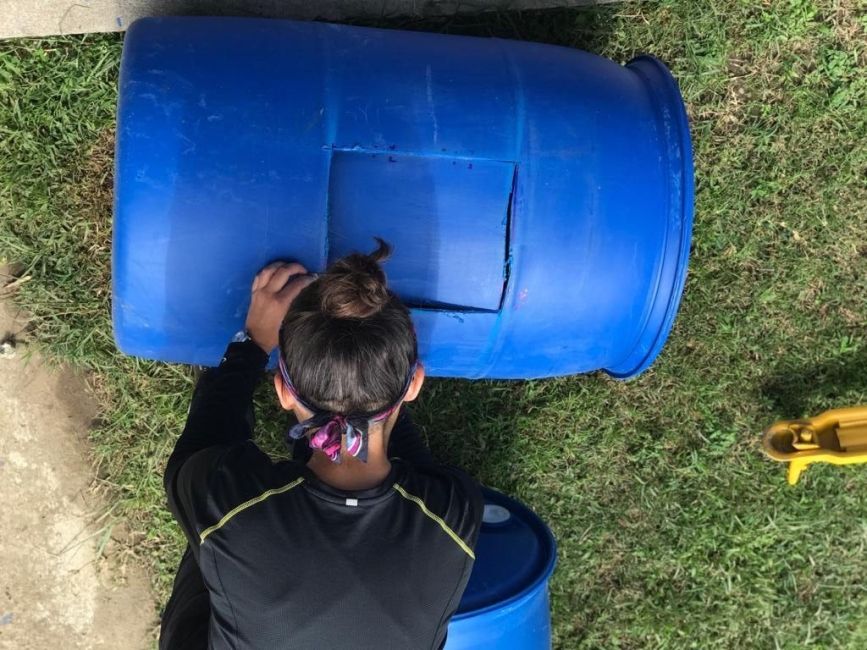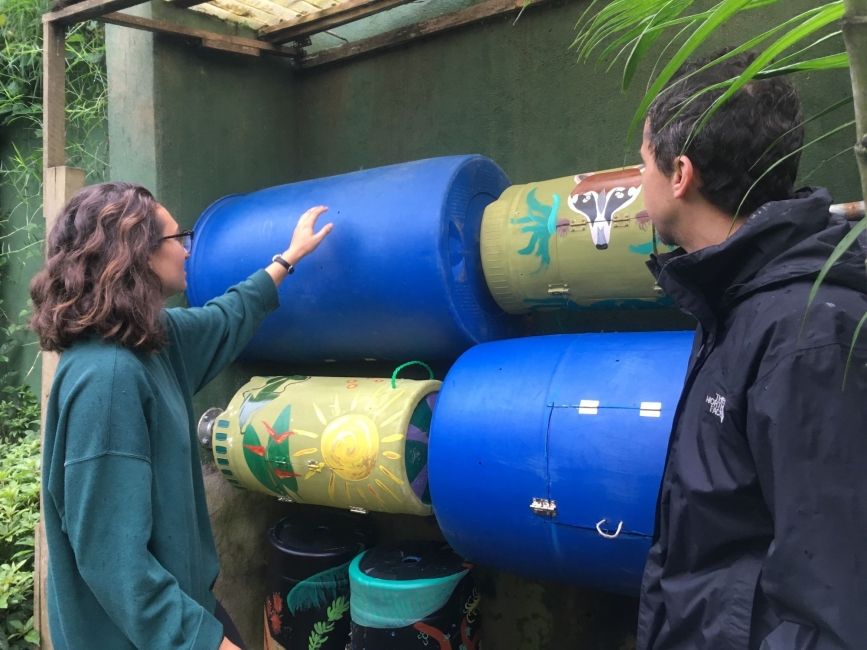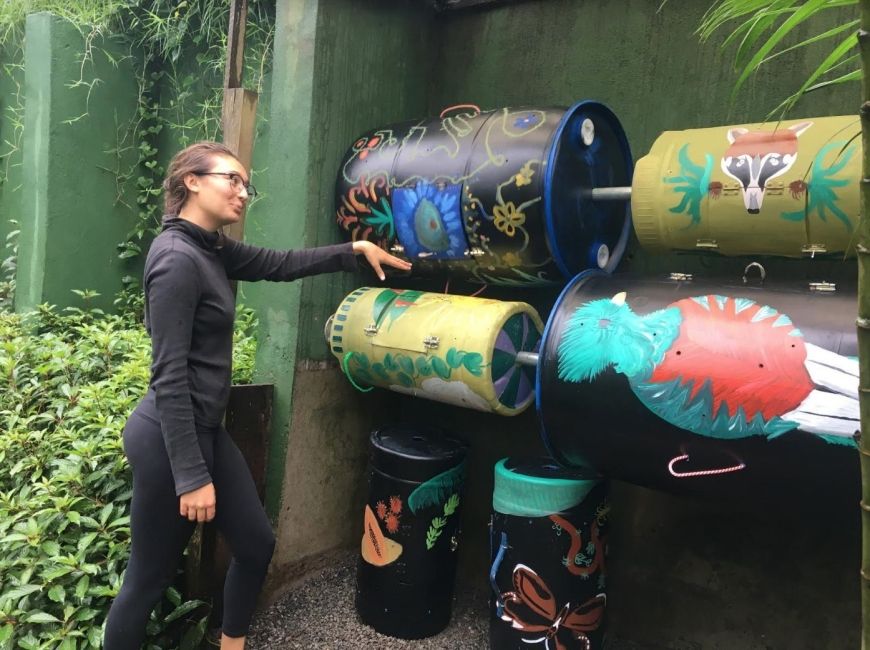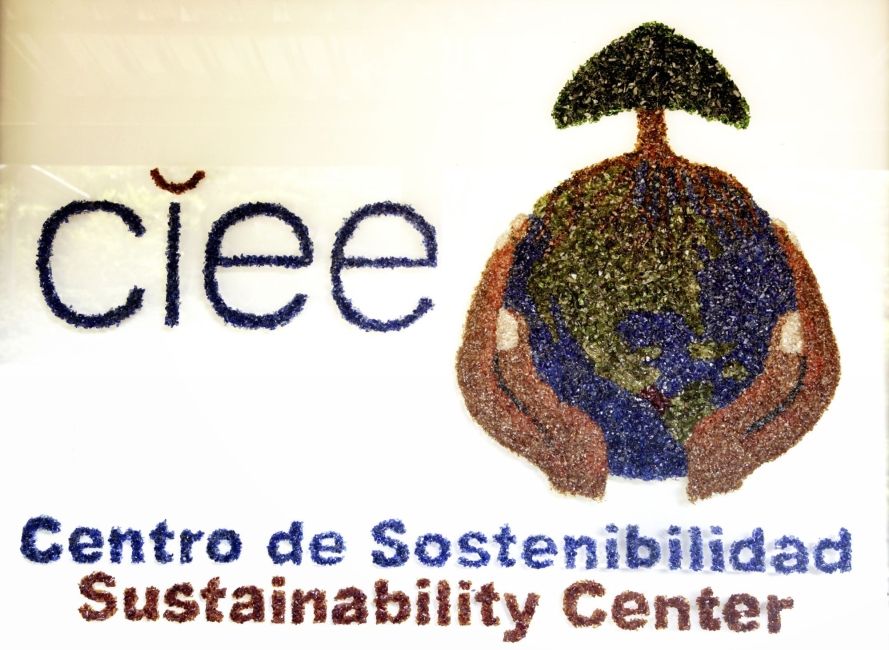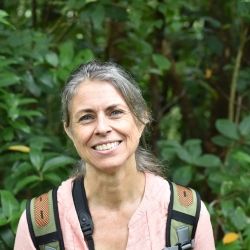Compost: Fertilizer or Art?
Written by Francesca Broer (Pacific Lutheran University), Internship in Sustainability and the Environment.
A major component of my undergrad experience has been the realization of the consumer society we have become. Most of the time, there is a lack of awareness of the rate and amount of food that we consume and what happens to the food that we don’t. The beautiful thing about food is that it is organic and organic material can be collected, composted, and broken down to be used as a natural fertilizer. Gratefully my institution in the states composts and so does my institution here, CIEE, in Monteverde. My personal and professional interest within the realm of sustainability revolves around spreading the awareness of consumption and what we, as everyday people, can do to decrease our ecological footprint from a waste based perspective.
In this internship, I focused on transforming CIEE’s compost from a vermicompost into a compost system that is more conveniently manageable. At the beginning of this process, I had to decide what type of composting system would best fit the CIEE center. Accordingly there are more than sixteen different ways to compost organic waste- which is something I was unaware of before this project- giving me a variety of options to choose from. Yet, when I initially thought of convenient composting, I thought of the implementation of tumblers. The tumbler system is not common in the town of Monteverde, but as the CIEE center is a model of sustainability for the community, implementing the tumblers at this site would be a great way to get the community thinking about different ways they could compost as well.
Throughout the process I was able to gain not only knowledge about compost, but knowledge and skills in construction and building. Compost information I obtained includes: what is comprised in compost among browns and greens, how long it can take for it breakdown, how composting is an aerobic process and prevents the release of methane, and how it can be used for family and farm, gardens and yards as an organic fertilizer. During the hands-on portion of this internship I: broke down and cleaned up the previous vermicomposting area at CIEE; constructed the tumblers themselves which improved my drilling skills in plastics as well as cement and learned how to use a rivet; came up with ways to use recycled materials for this project including the handles, poles holding them up and the paint; and created a brochure for those instructions on how to tend to the compost system. Over all, I constructed six compost bins and placed four of those onto the structure I built with the given area at CIEE. I contributed two large 55 gallon tumblers and two smaller 12 gallon tumblers to CIEE specifically to put their organics for compost and tend to with ease. The other two smaller tumblers are 12 gallons going to be used by locals and at the same time, serving as an aesthetically pleasing, convenient, and easy to use compost system example for community members of Monteverde to consider building using in their own homes and businesses.
Related Posts
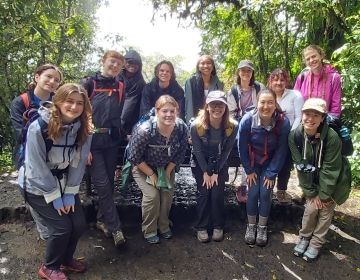
Happy Earth Day: Today and Every Day
Happy Earth Day! Every April 22, this global event comes around to remind us how precious our planet is, what sustainable efforts we can make to protect Earth, and that... keep reading
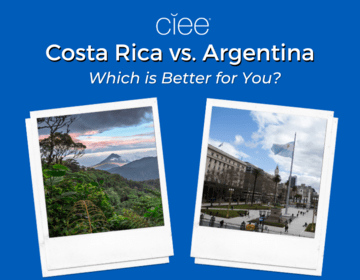
Costa Rica vs. Argentina: Which is Better for Study Abroad?
Imagine yourself sipping mate in a bustling Buenos Aires café or lounging peacefully in a hammock overlooking Costa Rica's lush rainforests. These contrasting scenes represent just a glimpse of the... keep reading
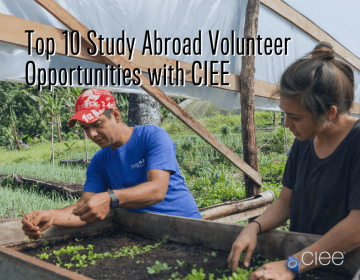
Top 10 Study Abroad Volunteer Opportunities with CIEE
Have you ever wondered if you could volunteer abroad? Perhaps you're looking into study abroad programs that provide international volunteer opportunities. If you’re itching to study abroad and truly make... keep reading
